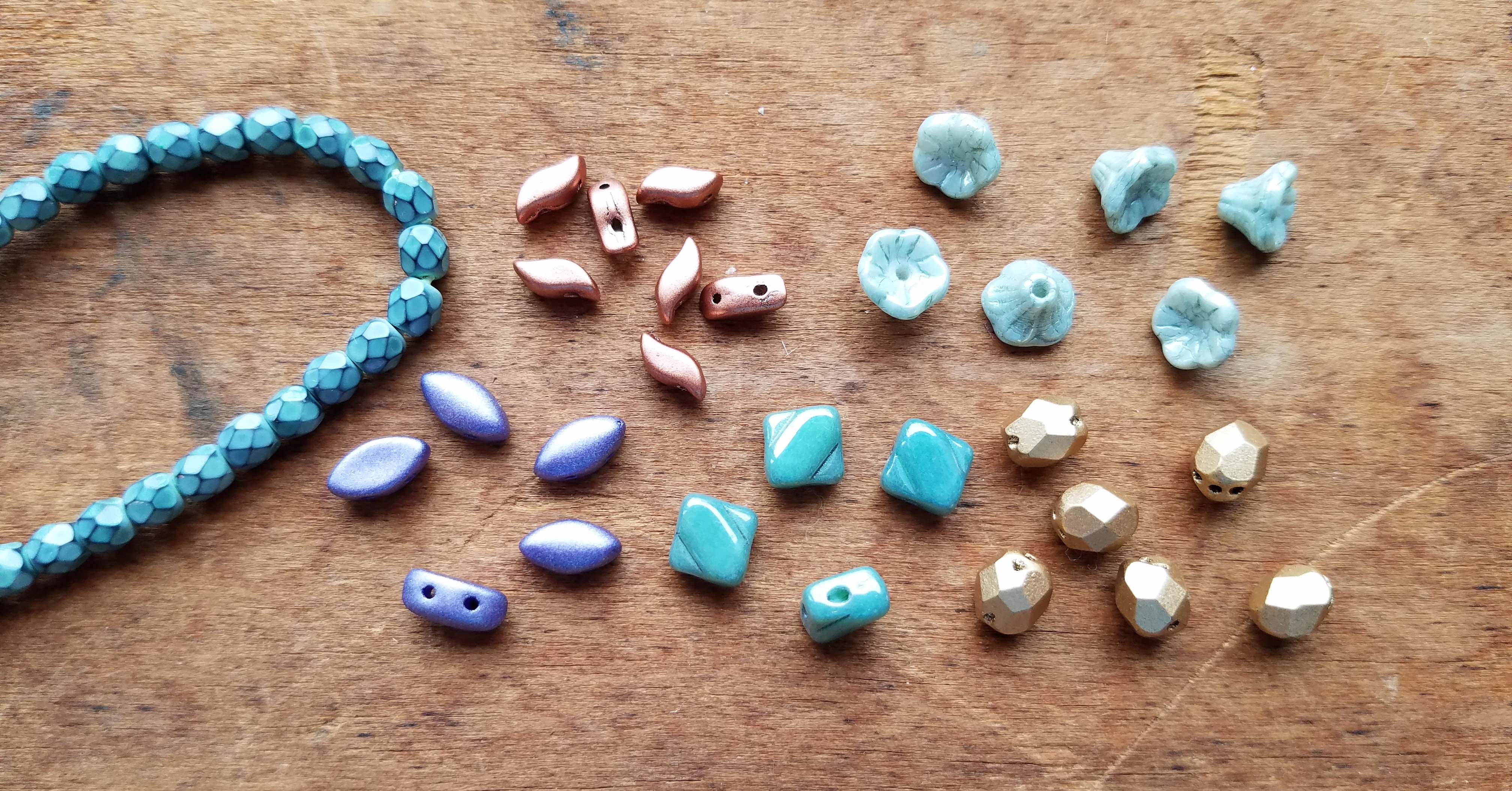- Jewelry-Making Supplies ▾
Design Jewelry with Confidence!
Seed Beads
Thread, Wire, & Stringing Materials
Athenacast Findings & Components
Everything Else
- Kits & Collections ▾
Assemble Your World
Kits & Collections
- Subscriptions ▾
Want monthly Beading Happiness?
Subscriptions
- Learn to Make ▾
Want to learn more?
- Discounts & Deals ▾
Explore Today's Promotions!
- Jewelry-Making Supplies
- Kits & Collections
- Subscriptions
- Learn to Make
- Discounts & Deals
-
Seed Beads
Thread, Wire, & Stringing Materials
Findings & Components
Everything Else
-
Kits & Collections
-
Subscriptions
Czech Glass Beads: Hand Pressed vs. Machine Pressed
PAGE VARIABLES - ONLY VISIBLE ON EDIT MODE *
Subtitle
The making of pressed glass beads, dating back many centuries, began in North Bohemia in eastern Europe, now known as the Czech Republic. It has often been referred to as a “Cottage Industry”, as many laborers set up the glass pressing machinery in their own homes or garages.
Blog Date
Blog Author
Blog Author Preview - NOTE: To change author, edit page attribute page selection
Blog Tags
Blog Category
bodyHtml
- Home
- PotomacBeads DIY Blog
- Czech Glass Beads: Hand Pressed vs. Machine Pressed

The making of pressed glass beads, dating back many centuries, began in North Bohemia in eastern Europe, now known as the Czech Republic. It has often been referred to as a “Cottage Industry”, as many laborers set up the glass pressing machinery in their own homes or garages.
What Exactly Is a Pressed Glass Bead?
A pressed glass bead is one which is created with a mold. The process begins when a large glass rod known as a “cane” is heated up and stamped into a mold (whether by hand or machine) with a needle that pierces the a hole for the bead. The glass beads are then cooled and tumbled in a sand mixture to polish out seam lines and smoothen the surface. Glass pressing offers many benefits to bead production:
Benefits of pressed glass beads
Versatile - By using molds, pressed glass beads are available in hundreds of colors, shapes and finishes.
Low Labor Costs - As opposed to lampwork or drawn glass beads which are labor intensive and done exclusively by hand, pressed glass beads can be mass produced rather quickly.
Consistent - Molds allow for consistently shaped beads which serves beaders well who need uniform beads for their projects.
Hand-Pressing vs. Machine Pressing
There are two types of glass pressed beads: hand pressed and machine pressed. To the bead consumer, the finished product does not reveal how the bead was formed. Hand-pressed beads and machine pressed beads are virtually the same, you can’t tell the difference by looking at them, but there are reasons why certain beads need to be created via one route or the other.

Pressing these AVA beads is only the first step. The seams need to be smoothed and excess glass that may overflow the mold needs to be removed by hand for each bead.
Hand-Pressing
While the vast majority of pressed glass beads today are machine-made, some glass beads today still need to be hand-pressed for a couple of reasons. For one, delicately shaped beads need to be hand-pressed because an automated machine wouldn’t be gentle enough not to break the bead during the production process. Some beads are more fragile and prone to breaking than others. And secondly, many opaque colored beads, such as opaque red, need to be hand-pressed because the glass for theses beads tends to be harder and would not work well in the machines.
The hand-pressing process is done by holding a glass rod by a large clamp. The end of the glass rod is heated until bright orange and the worker feeds the molten glass into the mold stamp by hand. The process is very time consuming and results in limited runs of these beads. Check out this video on hand-pressing and you can see for yourself how it is done.
Product Highlight: The AVA Bead
One such hand-pressed bead that many of you are familiar with is the ever-popular AVA bead. Because of the AVA’s shape and fragility, it can only be produced by hand. As many of our customers have pointed out, the AVA beads have a higher price-tag than other pressed glass beads and the production method is why that is.
I was fortunate enough to watch first-hand how AVA beads were made whiletraveling in the Czech Republic with Nate, Allie and my husband Bryan in October of 2017. When we arrived at this particular bead factory it was almost like we were stepping back in time and the production process was fascinating. We witnessed a factory worker making the beloved AVA beads just as is done in the video above, but there was even more that needed to be done to perfect the bead. After the AVA beads are dry-tumbled to smooth out the edges and seams, they are then gone through by hand to check for discrepancies. One issue that comes up with the making of the AVA is that during the tumbling process, the glass that sits in the "V" does not always get removed during tumbling. As a result, the workers need to hand snip the glass at that joint. Below is another video to show you what I'm referring to. This problem in particular made it very clear to me how labor-intensive the creation of the AVA bead is and gave me an even better understanding and appreciation of it's higher price point.

When glass colors are swirled, the seams that run down the center of a pressed bead are visible.
Machine-Pressing
While pressed glass beads were first created by hand, the Industrial Revolution in the 19th century brought about automated machinery for the mass-production of pressed glass beads. The new machinery allowed for a larger output of beads, lower labor costs, and therefore lower product costs for the consumer. In addition, it gave beadmakers the ability to create complex shaped beads quickly and ship them out to consumers worldwide. The first part of the YouTube video below shows how machine-pressing is done.
Potomac Exclusive Pressed Glass Beads
The Potomac Bead Company carries an array of EXCLUSIVE pressed glass beads that began as an idea, and were executed quickly with the creation of molds and produced by glass-pressing machinery by our suppliers in the Czech Republic. Glass-pressing allows us at PBC to take an idea and turn it into a tangible bead that we can share with our fellow beaders. Here is a list of our exclusive pressed glass beads:
AVAS | CUP BUTTONS | DISCDUO | IRISDUO | ROUNDUO | ROUNTRIO | FACETED ROUNTRIO | STORMDUO

A sampling of the Potomac Bead Company's exclusive products, including many Czech Glass pressed shapes.
Highest Quality
Products
100% Money
Back Guarantee
Fast
Shipping
Best Teaching &
Customer Service
You'll want these emails...
Get Free Projects & Inspiration
Get Free Projects & Inspiration
- Bullet 1
- Bullet 2
- Bullet 3
Copyright © PotomacBeads





